Since winter’s hand is soon to tease
Through icy hands of frost,
Be cautious of an early freeze
That renders quite the loss.
—Earl E. Pickens
If you’re a temperate climate farmer or homesteader like me, your warm weather loving varieties of vegetables must be protected against the onslaught of frost and freezing temperatures…that is if you’re going to extend their production into the fall. To begin with, though—their lifespan must be capable of lasting that long. Some spring-planted vegetables just plain fizzle out early after they’re finished producing, so a second season planting is necessary if you’re gonna make it to autumn. A good target date for second plantings is around the 4th of July. Put out your American flag, light up a firecracker, and head for the garden with a pocket full of seeds.
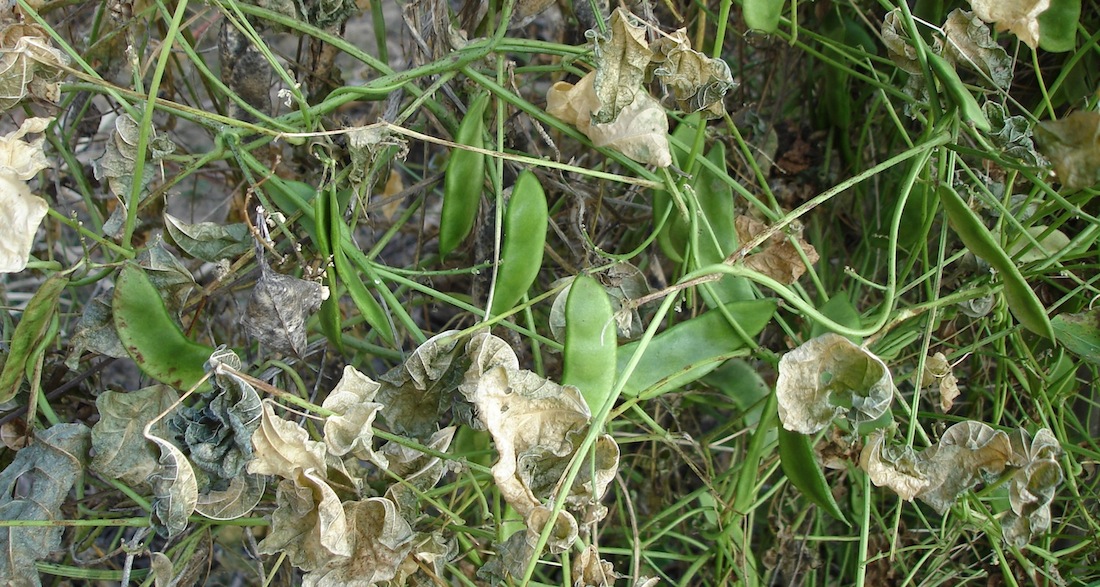
One of my favorite drought ignoring lima varieties, Hopi Red Lima, gets a “second wind” of production about August or September, before finally giving up to frost in another month or two.
However, the length of life for most varieties of okra, cucumbers, tomatoes, and beans that are planted from early to mid-summer enables them to produce right up until the first frost when the vines die. But there are some simple practices that may buy you even a few more growing days in spite of inevitable winter weather.
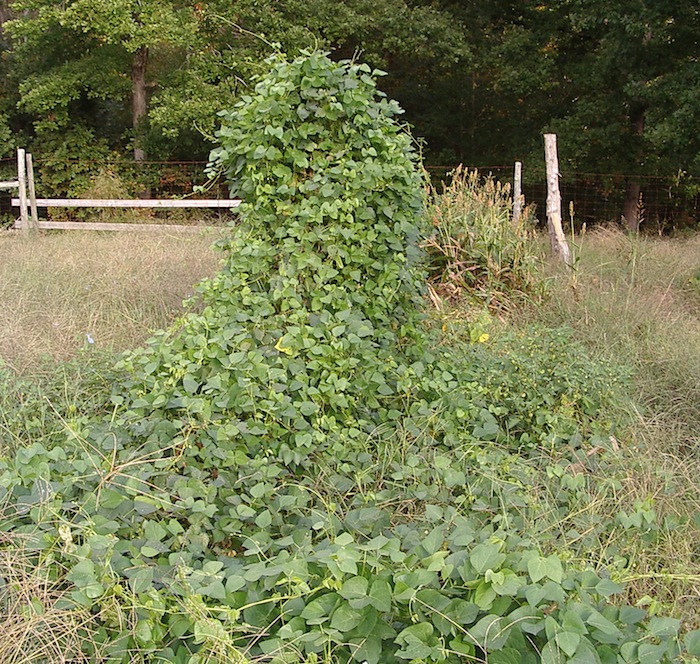
If you know frost is coming, you could opt for a light, all night sprinkling as an option to prolong a late season crop of pole beans like this…
One idea is a water sprinkler set to spray vulnerable plants overnight when there’s a frost warning. The very same 55-degree water that freezes you in July when your spouse or kids catch you unaware with a water hose, also keeps frost from forming on susceptible plants in November. How ironic. I’ve heard of orchard growers using commercial sprinklers in spring to protect the fragile blooms of peach trees from imminent frost.
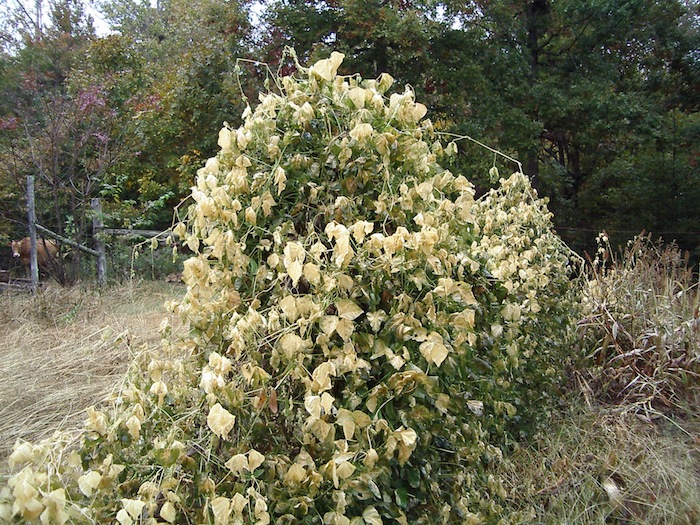
…or not opt.
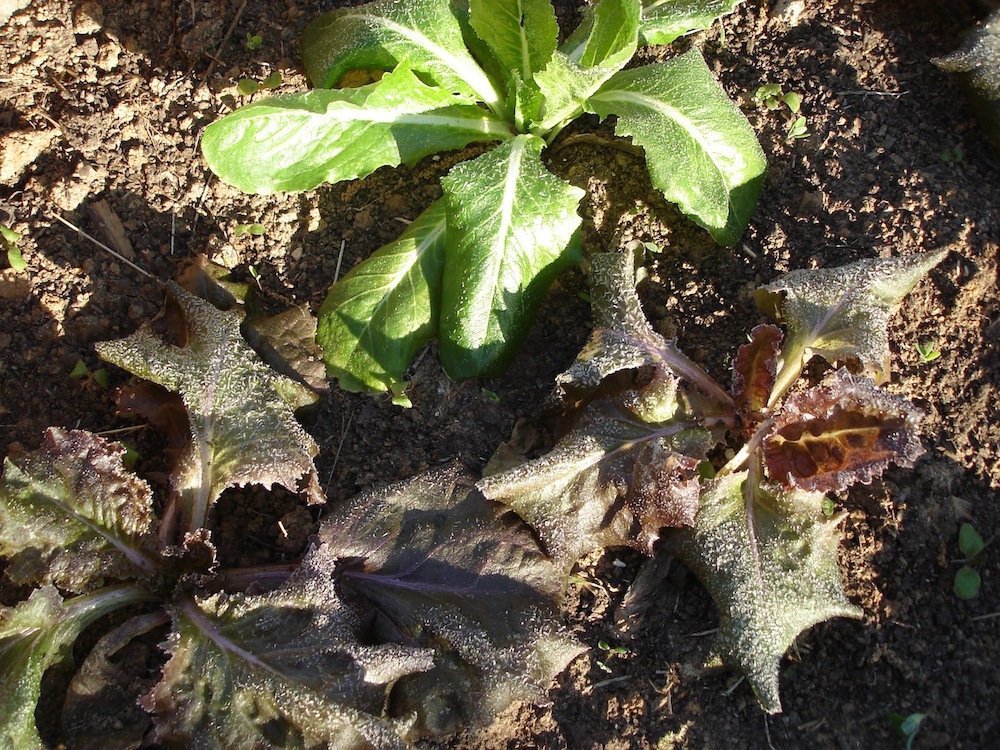
Keep in mind that a frost and a freeze are not synonymous; although they commonly happen together, either one may occur without the other. Frost occurs when the temperature of the plant is at or below freezing while at the same time lower than the dew point, with the air temperature surrounding the plant being higher than the dew point. It can form even when the reported temperature is above freezing, but doesn’t occur if it’s cloudy or windy. Protection from frost can be as simple as covering vulnerable plants. A freeze that is severe enough, however, may still destroy plants that are lightly covered, and can occur under cloudy and windy conditions.
My mama taught me that if it’s windy or cloudy or both, there won’t be a frost. That’s always been a helpful piece of wisdom for me. But it’s a farmer’s secret so don’t tell anybody.
Here are some specific ideas for protecting a couple of end-of-the-season garden inhabitants:
Tomatoes
If you only have a few tomato vines, protection from frost at the end of the season doesn’t have to be complicated. Covering them can often do the trick.
Any covering including tin, corrugated fiberglass roofing, or even plywood may accomplish the goal (provided you have some type of support around the plants to keep the material from crushing ’em; that’s obvious, isn’t it?). The covering is only needed during nighttime and should be removed the next morning.

An even more welcomed sight in October and November, as it is in July
Your garden’s best defense against a freeze is the same one that keeps you warm in your home…insulation. If you only have a few vines try this: build a small hut around the plants using hay or straw bales, constructing them a little higher than the top of the plants. Extra firewood will work, too…piled up about even with the top of the plants. If you’ve got it, cover ‘em with a sheet of transparent, corrugated roofing that will allow the light in. An old storm window will do, too. Even better—someone’s discarded sliding glass door. If you don’t have any materials like that, use some small branches or limbs spread thick on top. Cedar or other evergreen branches do the trick right nice. Or, any type of window screen, old screen door, or leftover chicken wire draped across the top with old moldy hay covering it (it’s always been a challenge to find a good use for moldy hay). None of this will be totally freeze-proof when the big one hits, but it can keep you in tomatoes longer than you might have been otherwise.
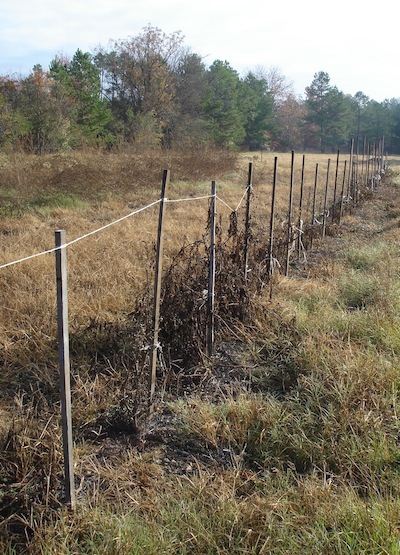
Remember that during this time of year, straw bales for autumn yard decorations are easily available. Sometimes people even give them away after they’re tired of lookin’ at ’em on their porches. But even if you have to buy one or two, almost no price is too high for those who appreciate the taste of home-grown tomatoes in November. And then you can put the bales in your compost pile or chicken house. Nothing’s wasted.
Too late for these
Potatoes
You’ll have to remember this next year: For potatoes (henceforth called “tators”) that were planted early in the spring or late winter, leave several feet of them in the ground when digging them up in the middle of summer, and most times they’ll sprout before the end of the year. Although they may not have enough time to grow very large by the end of the season, they might provide a few late meals of small “new” tators as the weather starts cooling down.
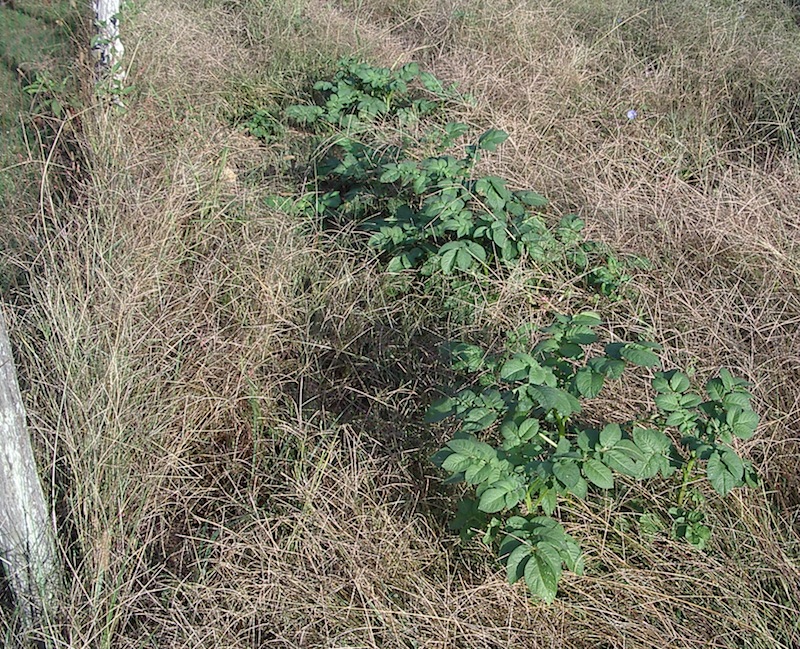
About six foot of undug tators in June gave me about six foot of new tators in November
For right now, though, stick some seed tators with good, big eyes down in a pile of wasted hay. They might surprise you with a few last of the year new tators.
(An altered version of this article was written by Pa Mac and first published in a 2007 issue of Tennessee Gardener Magazine, excerpted here with permission courtesy of State by State Gardening)
Shared on:
The Backyard Farming Connection

